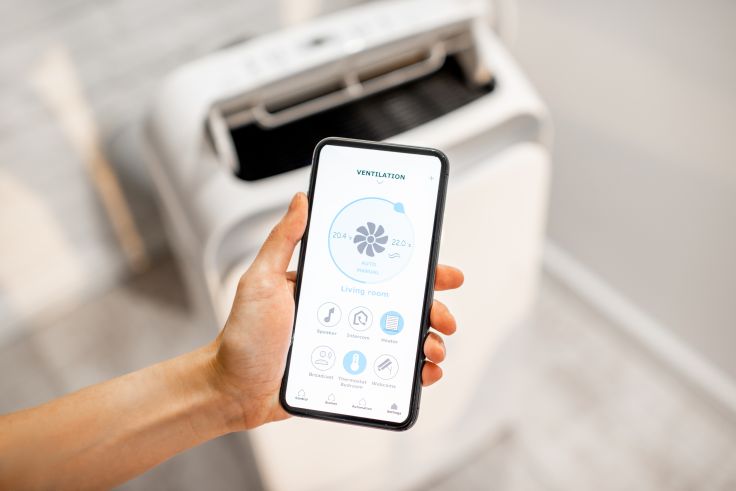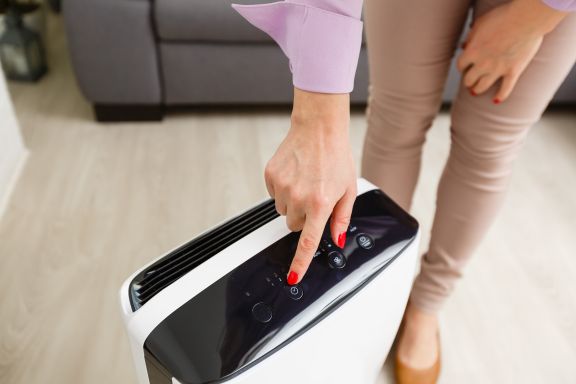What should the dehumidifier be set at in the summer?
It is optimal to have a humidity level around 40 to 50 percent. More humidity than 40 percent can result in the growth of mildew and mold, and humidity that is lower than 30 percent can damage or deform a structure. Dehumidifiers are also useful for those with emphysema or other breathing problems.
There should be a humidity between 30 and 50 percent in a room, in accordance with recommendations from the US Department of Energy (or between 30 and 40 percent in colder areas during the heating season). If humidity levels are significantly more humid, people may suffer from asthma, mold, and mildew.
If any of the members in your household suffers from asthma, allergies and colds, ensuring that the air in your home is humid enough to support them will help relieve their symptoms.
Should a dehumidifier run constantly?
Having a dehumidifier isn’t very important; it really depends on how long your dehumidifier runs. If you live in an area where humidity is much lower than what you would like, run your dehumidifier as long as you’re comfortable doing so. Just make sure that all the water in your dehumidifier is drained. Just remember to drain your dehumidifier when you run it. If it’s full, it will continue to work fine.
The best humidity levels for most people are about 30-50%. It’s safe to breathe and safe for your family. When you live in a house that has a relative humidity of 30-50%, it is safe to live comfortably and in a healthy environment.
What is the best setting for humidity?
The ideal humidity levels for health and comfort, according to the Mayo Clinic, is 30-50% moisture content. This indicates that the higher level of air humidity is 30-50%.
Excessive humidity can be detrimental to your comfort, home, property and health. If the air around you is too humid, your body can no longer regulate its internal temperature through evaporation. A room with high humidity will have the same temperature as a room with low humidity. It feels warm in a humid room.
If the humidity level drops too low, it can cause cracks, shrinkage, and mildew around the door jamb, wreaking havoc on your home. Anything made of wood will begin to dry and shrink.

Is it better to have a dehumidifier high or low?
Set your dehumidifier to 30-50% to remove excess dryness and moisture. Do not place the dehumidifier too close to the wall (the fan will freeze and stop working) Do not place the dehumidifier too high or use it excessively in winter (the dehumidifier may not work properly)
The device usually works well during the warmer months due to the higher humidity in the air. However, if you use a dehumidifier to dry your room in winter, you should consider two things:
- Machines attract moisture. If the temperature drops too much, the accumulated water could freeze and deteriorate.
- If you live in a cold climate, consider a dehumidifier with silica or charcoal.
Do you need to run a dehumidifier in the winter?
In winter, the inside of the house is dry, so there’s no need for a dehumidifier. In fact, dehumidifiers work more efficiently in warmer temperatures and become less efficient as the temperature drops.
Most dehumidifiers should not be used below 60°F. This is because if moisture released from the room air condenses on the cooling coils, it can freeze and damage the unit.
If the temperature drops below 65 degrees Fahrenheit where you use a dehumidifier, consider unplugging it and storing it for the winter.
What humidity should I set my dehumidifier to in winter?
A humidity level of 30-40% is a good baseline for winter humidity levels, but you will have to experiment with temperature and humidity settings to find the ideal setting.
Natural humidity levels vary by season. Most homes are sealed against the elements, but if you have insulation or ventilation issues, the air entering your home will affect temperature and humidity levels.
If you already have a whole-house humidifier, replace or clean the humidifier filter once a year. Dirty humidifier pads can prevent the humidifier from producing the required amount of moisture in your home.
Is 60 humidity too high for a basement?
It’s possible for that air to enter your basement, raising the humidity there to about 60%. Homeowners must therefore make an effort to bring those levels back to the ideal range of 30 to 50% humidity to avoid the growth of bacteria, mold, and mildew.
Mold can begin to develop once relative humidity levels rise above 55%. It is crucial to prevent moisture from entering your basement because mold poses a serious health risk to people of all ages.
Energy and health side effects can result from high humidity levels. In humid environments, moisture can also prevent your body from expanding heat, leading to overheating.
When should you turn off the dehumidifier in the basement?
It’s time to consider unplugging your dehumidifier and storing it away for the winter when the room where it’s being used starts to get below 65° F. Dehumidifiers typically last between five and ten years. It’s crucial to take care of your dehumidifier to extend its lifespan.
It’s time to repair or enhance your dehumidifier if it fails to remove moisture from the air when it operates or if it stops working for no apparent reason. Make sure to recycle any old dehumidifiers you want to get rid of. Hydrochlorofluorocarbon (HCFC), a greenhouse gas that can also weaken the ozone layer, is a component of dehumidifiers.



